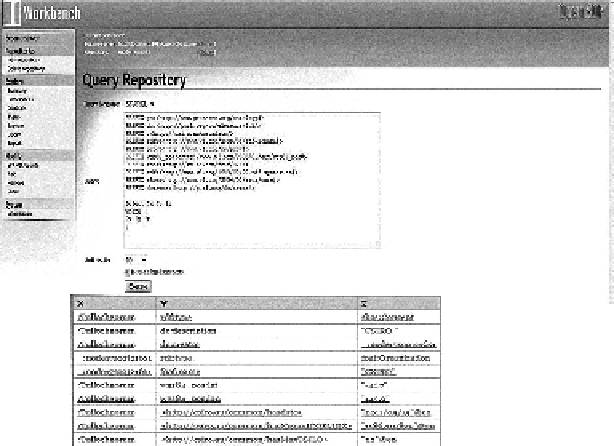Database Reference
In-Depth Information
FIGURE 15.4
Sesame triplestore.
15.3.7 loD P
ublishing
l
ayer
The term Linked Open Data (LOD) was introduced by Tim Berners-Lee in his
Linked Open data note and the famous lecture at Ted Talk [8,46]. The main purpose
of the LOD publishing layer was to make people connected through data on the web
where people can share, and reuse the knowledge very easily. In computing, linked
data describes a method of publishing structured data so that it can be interlinked
and become more useful. Publishing knowledge as linked open data cloud, which is
the next-generation knowledge representation, was a very important aspect of this
architecture. The final layer of this architecture was motivated by the philosophy
that knowledge and recommendation about the knowledge should be openly acces-
sible to the broader community. It was built upon standard web technologies such as
HTTP and URIs, but rather than using them to serve web pages for human readers,
it extends them to share information in a way that can be read automatically by com-
puters. This enables data from different sources to be connected and queried. Layer
wise RDF representation made this knowledge integration architecture very flexible
to publish on LOD cloud. It is the best practice for exposing, sharing, and connecting
pieces of data, information, and knowledge on the semantic web.
15.4
BIG KNOWLEDGE PROCESSING:
TULLOCHGORUM CASE STUDY
15.4.1 t
ulloChgorum
s
ite
The motivation behind this case of the study was to conduct some novel data knowledge
engineering experiments associated with complexity of multiple data integration and

Search WWH ::

Custom Search